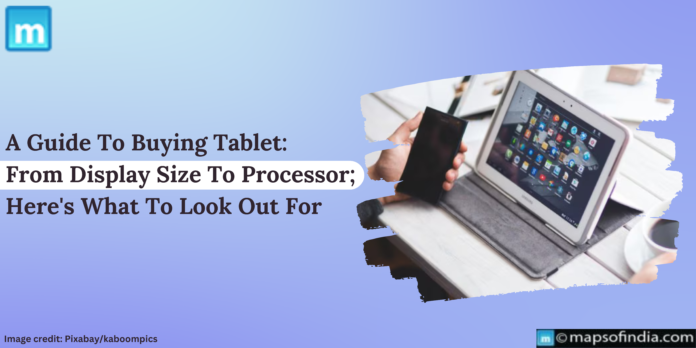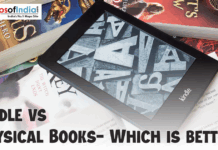Tablets are now a crucial part of our digital world, providing a handy and flexible way to use technology. Whether you’re a student, a working person, or just someone who likes using devices on the move, picking the best tablet is essential.
Features To Consider In A Tablet While Buying It
This guide looks into the important things to consider when buying a tablet, like the screen size and how fast it works, so that you can choose wisely.
-
Display Size
When you look at a tablet, one of the first things you’ll see is how big the screen is. Tablets can be small, around 7 inches, or larger, up to about 12 inches. Smaller tablets are easy to carry around and are great for reading or surfing the internet. On the other hand, bigger tablets are better for watching movies, getting work done, or doing creative stuff like drawing or editing photos. When choosing the screen size that suits you best, think about what you want with your tablet and what feels right to you. It’s all about finding what works best for how you want to use your tablet every day.
-
Processor
The processor, also known as the CPU, is like the brain of a tablet. It’s what makes everything work smoothly. When choosing a tablet, pick one with a modern and robust processor. This will make the tablet faster and better at doing many things simultaneously. Some popular types of processors are Qualcomm Snapdragon, Apple’s A-series, and Intel’s Core processors. Each of these has its good points and abilities, so it’s worth considering which one suits you best based on what you plan to do with your tablet. A good processor means a tablet that runs well and can handle whatever you need.
-
Memory and Storage
Tablets have different amounts of RAM (memory) and storage space. RAM, usually between 2GB to 8GB, helps run multiple apps smoothly and handles demanding apps better. Storage capacity refers to the data you can save on your tablet, like apps, documents, photos, and videos. It’s essential to consider how you’ll use your tablet and how much storage space you’ll require for all your digital content. You may need more storage if you use many apps or save many photos and videos. So, before buying a tablet, consider your needs and make sure you have enough RAM and storage for your everyday tasks.
-
Operating System
Tablets run on different operating systems, like Android, iOS (for Apple iPads), and Windows. Each system has its own unique features and app collections. When choosing a tablet, consider which operating system works best with your other devices and favourite apps. Consider what kind of user experience you want—whether it’s seamless integration with your existing gadgets or specific apps you like to use. If you’re used to using certain apps on your smartphone or computer, you might want to stick with an operating system that supports those apps. This way, your tablet can easily fit into your digital lifestyle.
-
Connectivity and Accessories
Tablets provide different connecting ways, such as Wi-Fi, Bluetooth, and cellular (4G/5G) options. Suppose you need internet access while away from Wi-Fi; consider a tablet with cellular capabilities. Also, look into accessories like styluses, keyboards, and cases to improve your tablet use.
When choosing a tablet, consider many things, such as screen size, processor strength, operating system, and how it connects. Knowing what matters most lets you pick a tablet that fits your lifestyle perfectly.





